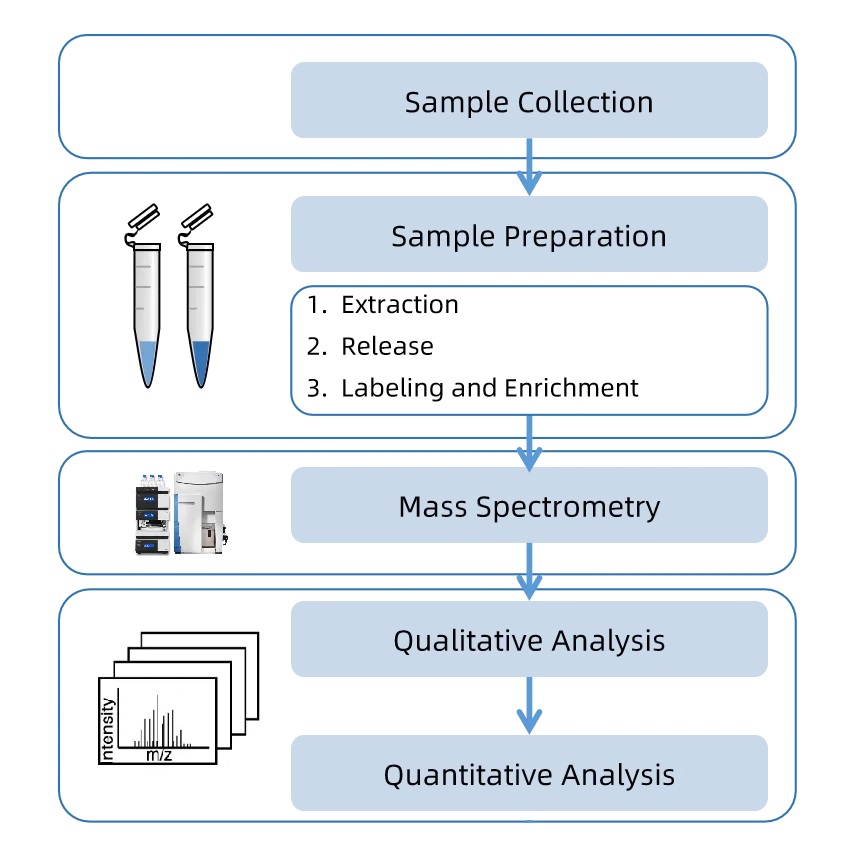Venom N-Glycan Quantitative Analysis Service
MtoZ Biolabs provides Venom N-Glycan Quantitative Analysis Service to accurately quantify N-glycan structures from venom proteins with high sensitivity and reproducibility. Using isotope and isobaric labeling strategies for relative quantification, combined with chemically pure glycan standards for absolute quantification, we ensure precise measurement of glycan abundance and heterogeneity. Our integrated workflow with advanced MS and HILIC-UHPLC platforms delivers reliable quantitative data, supporting venom research, toxin mechanism studies, antivenom development and related applications.
Overview
Venom is a complex biochemical system containing a variety of proteins and peptides with diverse biological activities. Among the post-translational modifications observed in venom proteins, N-glycosylation is one of the most prevalent and functionally significant. This modification introduces additional structural and functional diversity to venom components, influencing protein stability, activity, immunogenicity, and host interaction. To fully understand the biological and pharmacological properties of venom proteins, it is essential not only to identify N-glycans but also to accurately quantify them.
Quantitative analysis of venom N-glycans provides insights into glycan heterogeneity, relative abundance, and biological significance. Such analyses can reveal interspecies and intraspecies variations, link specific glycoforms to biological functions, and uncover potential therapeutic or toxicological roles. MtoZ Biolabs offers Venom N-Glycan Quantitative Analysis Service using advanced mass spectrometry-based strategies that combine relative and absolute quantification approaches to deliver sensitive, reproducible, and comprehensive data.
Technical Principles
Venom N-glycan quantitative analysis is founded on mass spectrometry combined with labeling and reference strategies to achieve accurate measurement of glycan abundance. In relative quantification, isotopic or isobaric tags are introduced into glycans so that signals from different samples can be distinguished and compared within the same MS run, reducing variability and improving sensitivity. In absolute quantification, chemically pure glycan standards or labeled internal references are added to the sample, and their known concentrations are used to calculate the true abundance ratios of specific glycan structures.

Figure 1. N-Glycan Quantitative Analysis Workflow
Analysis Workflow
The main analytical workflow for Venom N-Glycan Quantitative Analysis Service is as follows:
1. Sample Preparation
Venom proteins are extracted and purified to preserve glycan structures.
2. Glycan Release
N-linked glycans are enzymatically cleaved from glycoproteins using PNGase F or PNGase A.
3. Labeling Strategies
Glycans are labeled with isotopic or isobaric tags for relative quantification, or with internal standards for absolute quantification.
4. Chromatographic Separation
HILIC-UHPLC is used to resolve glycans by polarity and structure prior to MS analysis.
5. Mass Spectrometry Detection
High-resolution mass platforms measure glycan mass, structure, and abundance.
6. Data Processing
Bioinformatics pipelines assign glycan identities, quantify abundance, and generate comparative datasets.
Service Advantages
1. High Sensitivity and Accuracy
Advanced MS platforms deliver precise quantitative data for both low- and high-abundance glycans.
2. Flexible Quantification Strategies
Our Venom N-Glycan Quantitative Analysis Service supports both relative and absolute quantification methods.
3. Comprehensive Coverage
Enables simultaneous profiling of neutral and acidic N-glycans.
4. Tailored Solutions
Customized workflows meet the specific requirements of venom glycomics research.
Sample Submission Suggestions
1. Sample Types
Crude venom, purified venom proteins, or venom gland extracts.
2. Storage
Store samples at -80°C; avoid repeated freeze-thaw cycles.
3. Shipping
Ship samples on dry ice in sealed, labeled containers.
It is recommended to contact our technical support team before submitting samples to determine sample suitability and obtain tailored submission guidelines.
Applications
Application examples for Venom N-Glycan Quantitative Analysis Service:
1. Comparative Venomics
Quantify glycan differences between species or populations to understand evolutionary adaptation.
2. Toxin Function Studies
Correlate glycan abundance with toxin activity, stability, and receptor binding properties.
3. Biomarker Discovery
Identify quantitative glycan signatures linked to envenomation or venom exposure.







